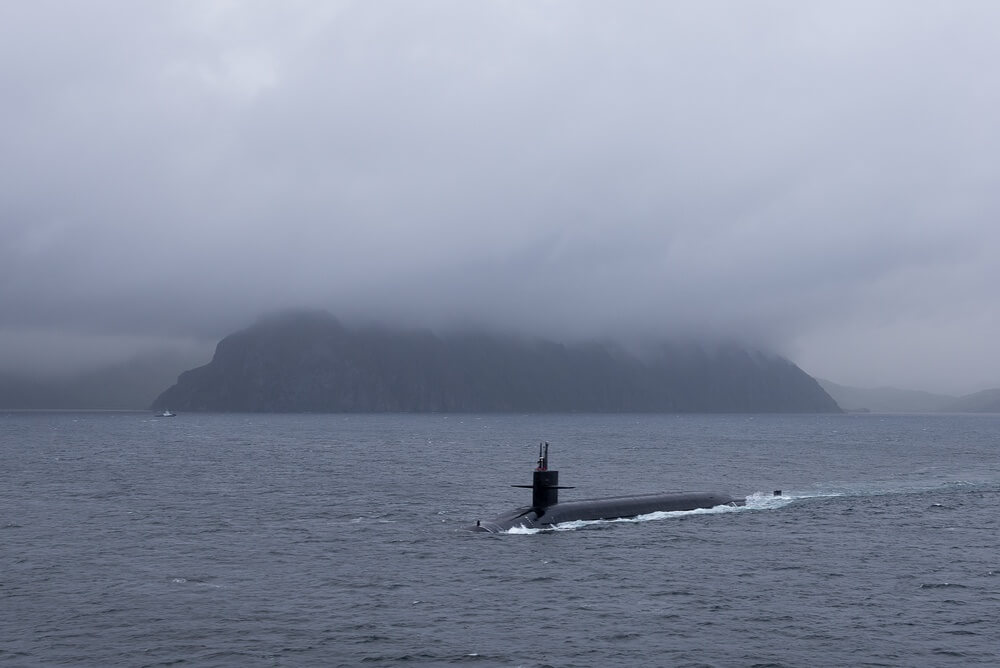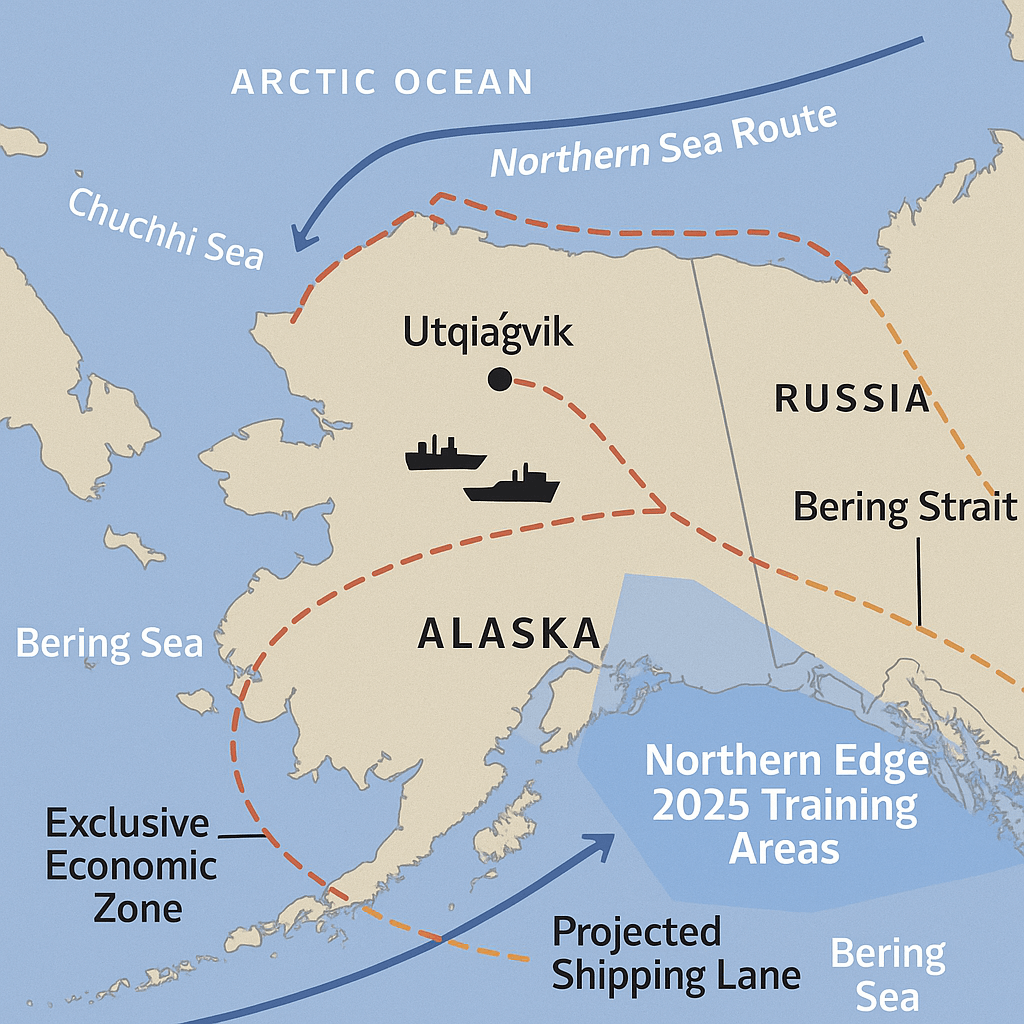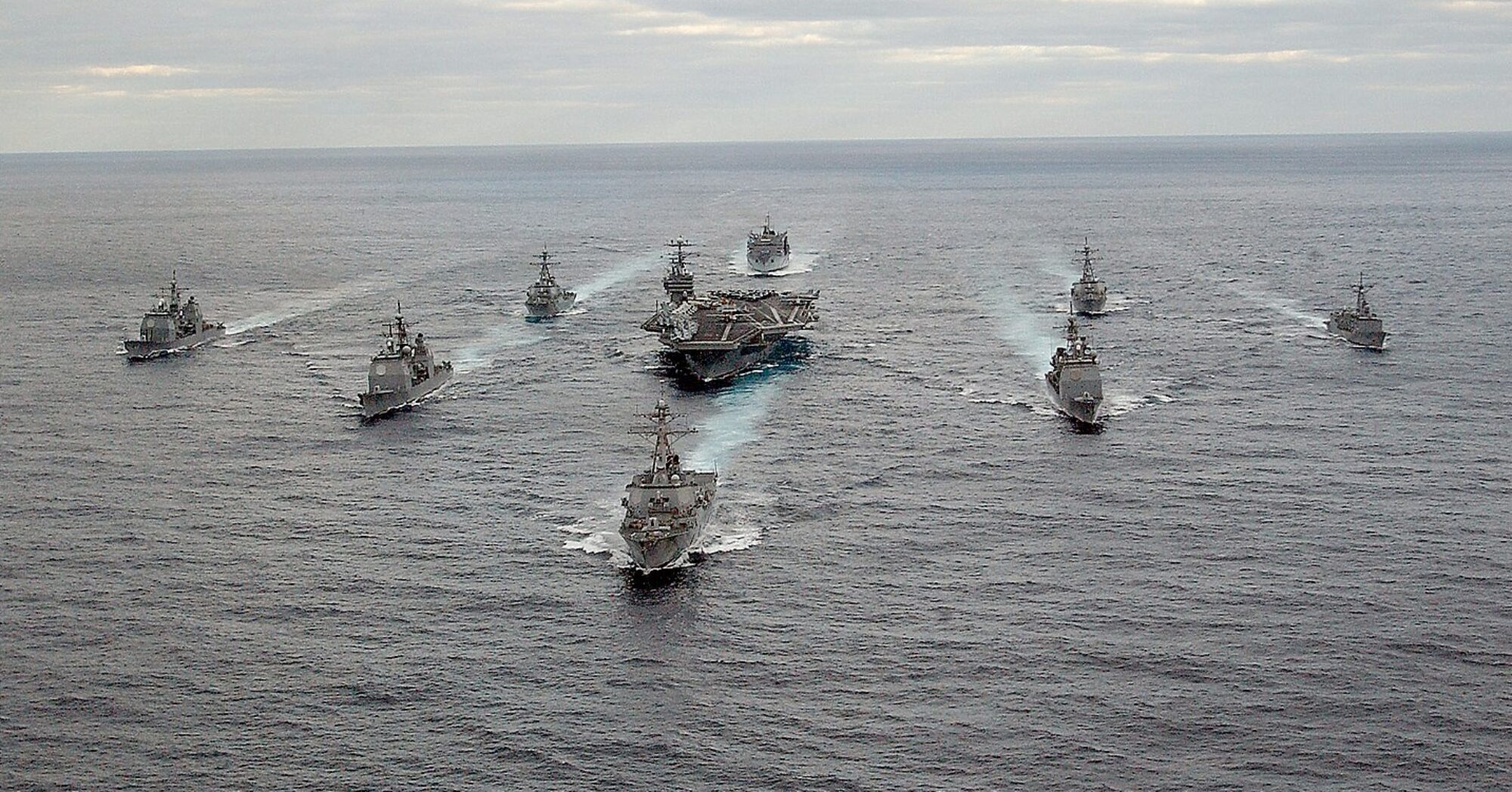
China and Russia are pushing closer to our northern doorstep — and Alaska is the front line.
Introduction
Over the past year, U.S. Coast Guard cutters have repeatedly intercepted foreign “research” ships operating just beyond the 200-mile line off Alaska’s Arctic coast. At the same time, the U.S. Navy has kept up under-ice submarine operations, while Russian aircraft test our air defense zone and Sino-Russian flotillas sail through the Bering Strait.

Dashed Red Lines – Patrol routes and foreign vessel tracks monitored by the U.S. Coast Guard near Alaska’s Arctic coast.
Solid Blue Lines – Projected Arctic shipping lanes, including the Northern Sea Route (along Russia) and emerging trans-Arctic corridors.
Shaded Blue Zone – Exercise Northern Edge 2025 training areas, where U.S. and allied forces conducted joint, multi-domain operations.
Black Ship Icons – Locations of recent intercepts of foreign “research” vessels near Utqiaġvik.
Exclusive Economic Zone (EEZ) – U.S. waters extending 200 nautical miles from Alaska’s coast, where America exercises sovereign rights over resources.
The takeaway is simple: America’s Arctic is no longer quiet. It’s contested.
Why Americans Should Care
Alaska is not a remote outpost. It is our Arctic front yard, rich in resources, with thousands of miles of shoreline and a narrow strait that connects the Pacific to the Arctic. When Chinese “research” vessels map our seabeds or Russian aircraft enter the Air Defense Identification Zone, they’re probing how close they can get to our homeland. What happens off Alaska affects energy security, trade routes, and even the protection of undersea cables that carry the world’s internet traffic.
RAND’s latest study underscores this point. In The Future of Maritime Presence in the Central Arctic Ocean (July 2025), RAND concludes that as sea ice retreats, the Arctic will draw in both Arctic and non-Arctic actors for economic, political, and military gain. They warn that competition will intensify in phases: first commercial, then political, and ultimately strategic. For the U.S., that means maritime presence is not optional — it is essential to prevent rivals from dictating the rules of the Arctic.
Implications for the Navy
Day-to-day patrols fall to the Coast Guard, which provides the only regular surface presence in the Arctic. But the Navy’s role is no less critical. Its submarines operate beneath the ice, practicing for deterrence and warfighting in a domain where rivals are gaining ground. The Navy also views Alaska as part of the defense-in-depth of the United States — the first line of detection and deterrence against missile submarines, long-range bombers, and other threats moving south from the Arctic.
This year’s Northern Edge 2025 exercise made that point clear. More than 6,400 U.S. and Canadian service members, 100 aircraft, and seven warships, including USS Abraham Lincoln and her carrier strike group, trained across Alaska. Running alongside Arctic Edge, the exercises brought together INDOPACOM and NORTHCOM to practice joint, multi-domain operations — from the Aleutians to Adak. In other words: Alaska is not just about defending the homeland, it is a launchpad for projecting U.S. power into the Indo-Pacific.
The challenge remains that America’s icebreaker fleet is thin, while Russia operates dozens and China fields new polar-capable vessels. Without recapitalization and greater presence, the U.S. risks falling behind in its own backyard. RAND echoes this warning: presence and infrastructure — from icebreakers to domain awareness — are key to avoiding strategic surprise.
Implications for Our Allies
The Arctic is no longer an American issue alone. NATO allies — Canada, Denmark, Norway — all face the same northern pressure. China brands itself a “near-Arctic state” and seeks influence in waters that directly border allied territory. Coordinated exercises like Northern Edge and Arctic Edge are proof that alliances matter. Shared domain awareness and investment in icebreaking and seabed security will be vital. If America steps back, allies are left exposed — and adversaries will fill the gap.
The Bottom Line
Alaska’s Arctic waters are an overlooked but critical front in U.S. homeland defense. The Coast Guard may be on point, but the Navy’s presence under the ice and in the chokepoints is just as important. Together, they demonstrate that the U.S. is watching, ready, and committed to protecting its northern approaches.
That’s why we launched Charting the Course: Voices That Matter — a 24-part educational series breaking down how we got here, what went wrong, and what must happen next. Our goal is simple: educate the public, connect the dots, and build the support needed to close the readiness gap before it’s too late.
Let’s roll.


